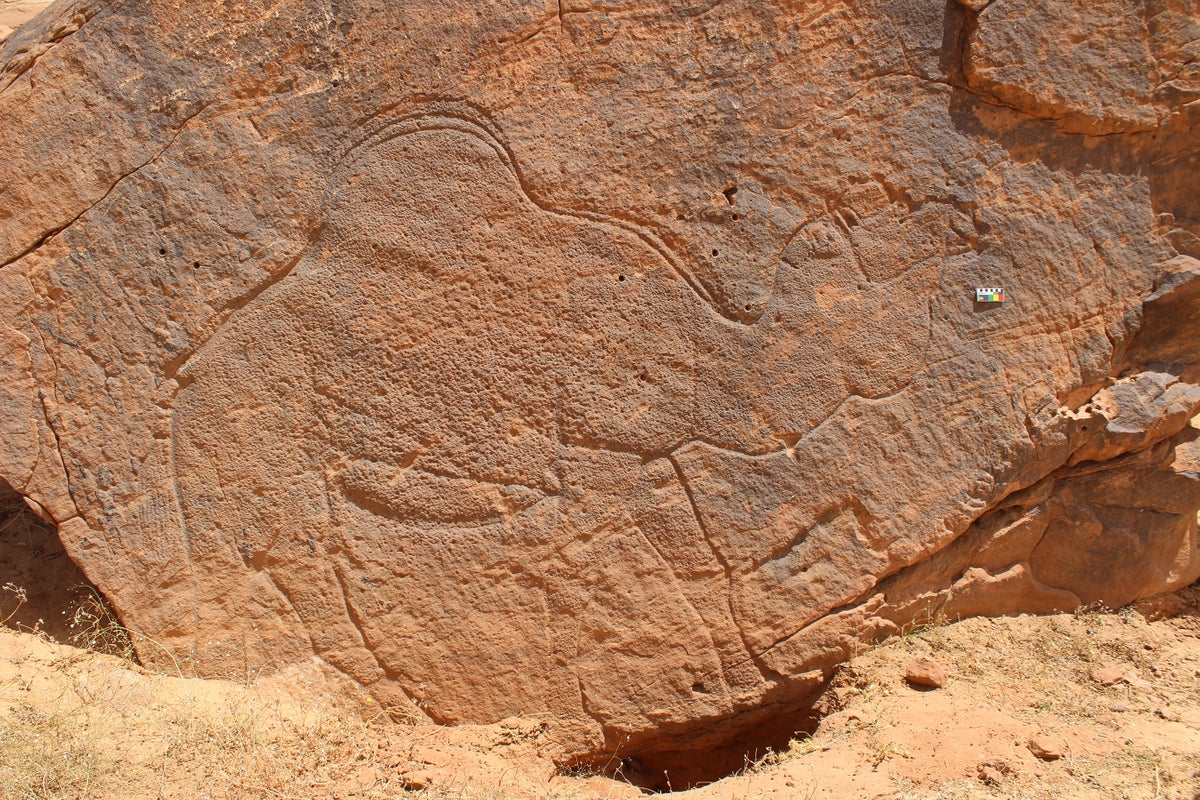
"Newly discovered prehistoric artwork suggests how a pioneering sect of desert nomads, unknown to history until now, carved out an existence about 12,000 years ago in the harsh environment of northern Arabia. At four remote sites near Saudi Arabia's Nefud Desert, researchers are puzzling over 130 life-sized animal images emblazoned on rocky outcrops. Wild camels dominate the carvings: 90 of them run alongside other ancient beasts that once roamed the arid landscape."
"Sweeping antlers of sure-footed ibex appear prominently. Ancient horselike equids are shown with their young. A depiction of an auroch, an extinct, hulking bovine that required plenty of water, suggests wetter environsbut only slightly wetter, say the archeologists who discovered the artwork. Their sediment analysis reveals seasonal lakes at two of the sites: ephemeral watering holes that were possibly shared by hunter-gatherers and other animals."
Four remote sites near the Nefud Desert contain about 130 life-sized animal images etched on rocky outcrops, with 90 depicting wild camels. Carvings also portray ibex with sweeping antlers, horselike equids with young, and an auroch suggesting slightly wetter past conditions. Sediment analysis indicates seasonal lakes and ephemeral watering holes at two sites, likely shared by hunter-gatherers and animals. Camels remained wild then, indicating pre-domestication encounters and their prominence signals adaptation to extreme aridity. Human groups established an existence in northern Arabia around 12,000 years ago despite scarce water at the end of the last ice age.
Read at www.scientificamerican.com
Unable to calculate read time
Collection
[
|
...
]